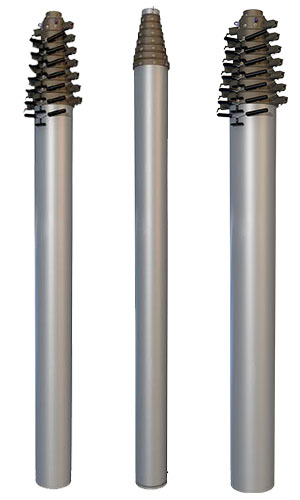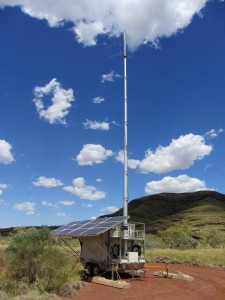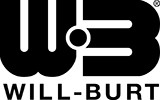
In extremely harsh environmental conditions, maintenance of the mast may be required.
Lubricating and Cleaning Your Pneumatic Mast
Will-Burt pneumatic telescoping masts come from the factory pre-lubricated and require no scheduled maintenance under normal operating conditions. In extremely harsh environmental conditions, maintenance of the mast might be required.
- A noticeable gritty film on the exterior surface of the mast sections
- Erratic extension or retraction of the mast
- Noisy operation of the mast
- Sticking of one or more of the sections when the mast is extending or retracting
Keep in mind that a pneumatic telescoping mast is a pressure vessel. Caution must be exercised to stay clear when the mast is being extended. Do not lean directly over the mast. Proper eye protection must be worn when working on the mast.
The procedure is as follows:
- Remove the top load from the mast. This will allow the sections of a non-locking mast to be more easily extended from smallest to largest. See procedure #3. On locking masts, the sequence of extension can be controlled by the locking collars.
- When a regulator exists in the pneumatic system, reduce its pressure to between 5 and 10 PSIG. 10 PSIG should be sufficient pressure to extend all
sections of mast without a top load. If any section will not extend with 10 PSIG the mast may require overhaul. Consult the factory.
mast without a top load. If any section will not extend with 10 PSIG the mast may require overhaul. Consult the factory.
- A person operating the air control valve should slowly pressurize the mast just enough to extend the top section. Another person may need to hold down the larger mast section collars to assure the proper sequence of extension. Close the air control valve as soon as the mast section is up.
- Wipe down the extended mast section using a non-abrasive cleanser or solvent such as lacquer thinner. Do not allow the cleaning fluid or solvent to run down inside the mast collar.
- Repeat steps 3 and 4 for the next larger mast section.
- Inject approximately ½ ounce of TMD Mast Lubricant or lightweight machine oil into the weep hole (drain) of the exposed mast section. The weep holes are located between one and three feet below the collar on each tube section except the top one.
- Repeat steps 3, 4 and 6 for each of the remaining mast sections. The larger diameter sections should be injected with approximately 1 ounce of lubricant.
- Lower the mast completely. Allow several minutes for the lubricant to settle and spread around the wear ring and seal the bottom of each mast section. Keep hands clear of the descending collars while the mast is being lowered to avoid pinching.
- Extend the mast again one section at a time in the same sequence (smallest to largest). Wipe off any excess lubricant, which flows out of the weep holes. Do not lubricate the exterior of the mast, as this will cause it to attract dust and contaminants from the air. Click here to download a .pdf of this white paper






